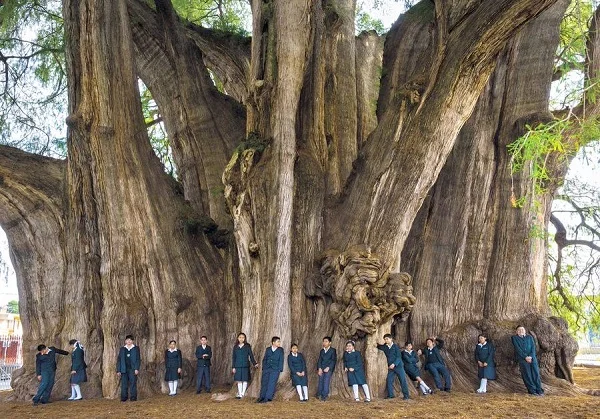Thule tree: the thickest tree in the world

The Thule tree (Arbol del Tule in Spanish ) is known as the thickest tree globally. In addition, it is one of the most ancient plants on the planet. According to scientists, the tree is approximately 1400 – 1600 years old. But there are versions that it is already 6,000 years old.
To embrace the Thule tree, you need at least 30 people holding hands. The shade from the tree can cover 500 people. The tree is about 40 meters high and weighs 636 tons.

The Thule tree grows in the courtyard of a church in Santa Maria del Tule in Oaxaca, Mexico.
According to the local history of the Zapotecs, the tree was planted about 1400 years ago by Pechocha (priest of the Aztec god of wind, Ehecatl). Therefore, the version of scientists about the age of the giant looks more plausible.
What is Thule Tree

It is a giant tree of the species Montezuma cypress (Taxodium mucronatum). It amazes with its huge and truly immense trunk.
The barrel circumference is 42 meters. And the diameter is as much as 14 meters.
It is worth noting that the giant trunk looks like a collection of several trunks. These are not round trunks like those of baobabs. Initially, it was even believed that these were several trees fused together. However, recent DNA evidence has proven that it is actually one tree.
The tree is not only very lush but also quite tall. Its height is 35 meters. The crown of the tree practically covers the nearby Church of Santa Maria and even its spire.
Thule is perhaps the most famous tree in Mexico. No tree in the world can compete with him. Therefore, tourists come here from all over the planet to see this giant with their own eyes. Just imagine, a mighty tree is a contemporary of the Roman Empire. This fact adds even more attractiveness to the Thule tree.
The gnarled, twisted bark of the tree has become a tourist attraction in itself. Local guides even use small mirrors to indicate the silhouettes of the animals “growing on the tree” in the reflection of the sun’s rays.
The Thule tree is also considered the tree of life for the inhabitants of Santa Maria del Tule because of the figures of animals (lion, elephant, crocodile, etc.), which can be seen on the trunk if desired.. And not just that, also because almost three-quarters of the local population depends on this attraction as a source of income.
Locals take care of the famous tree by watering and cutting branches, and on the second Monday in October, the city celebrates a holiday in honor of the Thule tree
In 2001, the Thule tree was included in the UNESCO World Heritage List.




